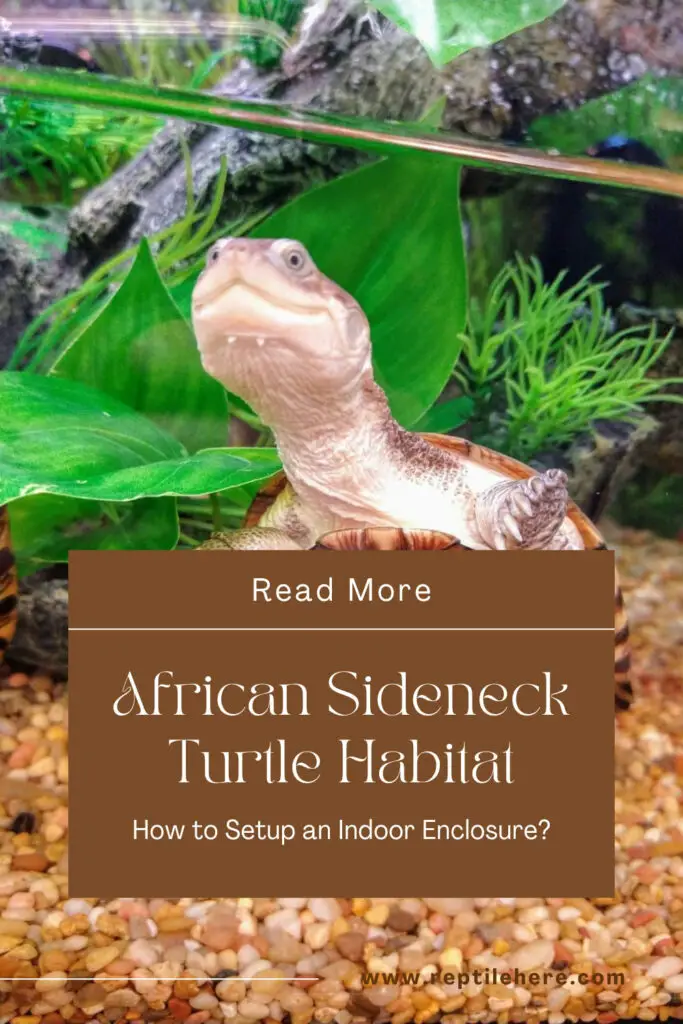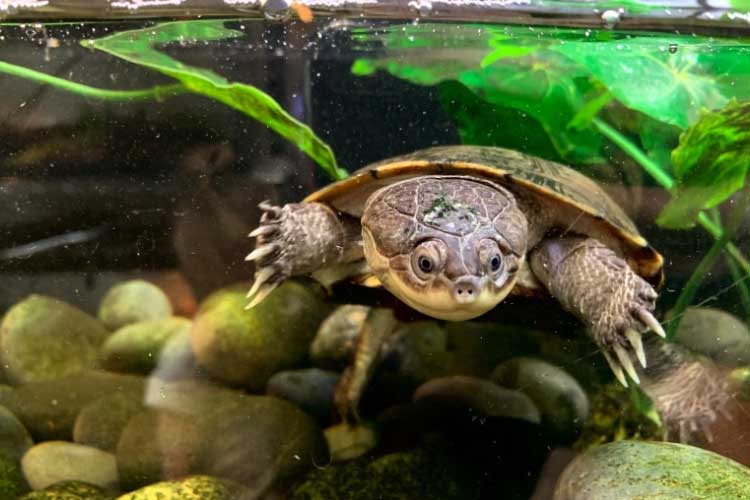African Sideneck Turtle Habitat: How to Setup an Indoor Enclosure
If you don’t know how to come up with a perfect indoor enclosure for your African Sideneck turtle, this guide is for you. Essentially, the habitat you set up for this species should mimic its environment in the wild. So, how do you achieve this?
A good tank setup for the African Sideneck turtle habitat should feature a deep swimming area and basking area. Furnish the tank with a filter system, water heater, heat lamp, and UV light. And maintain the basking area and enclosure temperatures at 80 degrees F and 90 to 100 degrees F, respectively.
The following guide discusses the full details of setting up an African Sideneck turtle habitat. You’ll learn what item you need for this project, the steps to follow, and other helpful information to keep in mind.
What do you need for African Sideneck turtle tank setup?
Contents
- Turtle tank
- Water heater
- Filtration system
- Heat lamp
- UV light
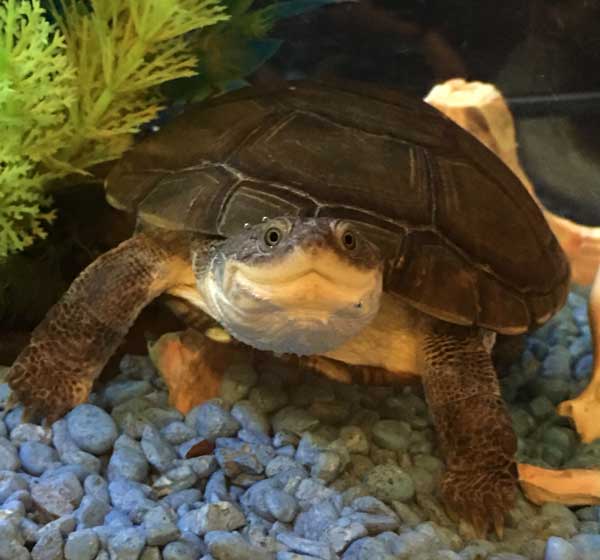
How do you set up an African Sideneck turtle tank?
Follow the steps we’ve outlined below to come up with an African Sideneck turtle habitat that mirrors its natural environment in the wild:
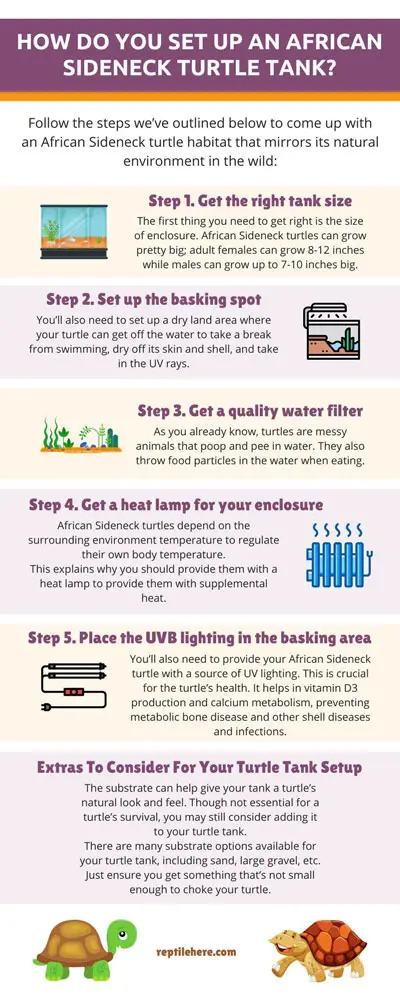
Step 1. Get the right tank size
The first thing you need to get right is the size of enclosure. African Sideneck turtles can grow pretty big; adult females can grow 8-12 inches while males can grow up to 7-10 inches big.
Therefore, you should get a tank that’s spacious enough to allow your pet to easily swim and dive inside. The larger the tank you get, the better.
Ideally, you should get your African Sideneck turtle a tank enclosure of at least 75 gallons. Fill the enclosure with conditioned water up to ¾ to half-full level.
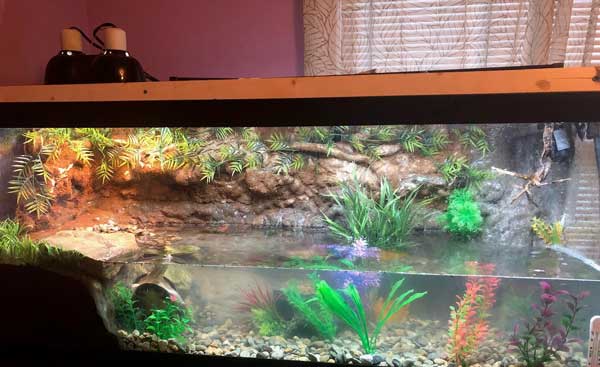
Step 2. Set up the basking spot
You’ll also need to set up a dry land area where your turtle can get off the water to take a break from swimming, dry off its skin and shell, and take in the UV rays.
You can use a floating dock or stationary patch, or you can use large rocks/gravel to achieve a basking area in your turtle enclosure.
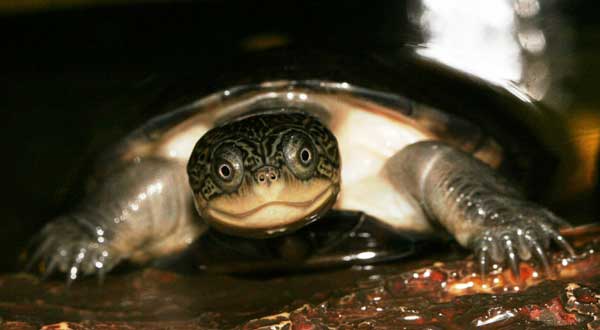
Make sure your basking water is spacious and stable enough to accommodate your turtle’s body size and weight, and even allow it to easily turn when drying up.
Step 3. Get a quality water filter
As you already know, turtles are messy animals that poop and pee in water. They also throw food particles in the water when eating.
If you don’t install a water filter in your turtle enclosure, therefore, you’ll be forced to do regular tank water changes and cleanups.
We recommend getting a quality aquarium filter that traps the waste and removes it from the water to keep your turtle housing clean and healthy.
Most people recommend a canister filter over submersible filters due to their increased reliability.
This is especially true for large tanks where the canister-type filter will do a better cleanup job.
Step 4. Get a heat lamp for your enclosure
African Sideneck turtles depend on the surrounding environment temperature to regulate their own body temperature.
This explains why you should provide them with a heat lamp to provide them with supplemental heat.
The ideal water heater for your turtle enclosure should be able to maintain an ambient temperature of around 80 degrees F on the cooler end of the tank
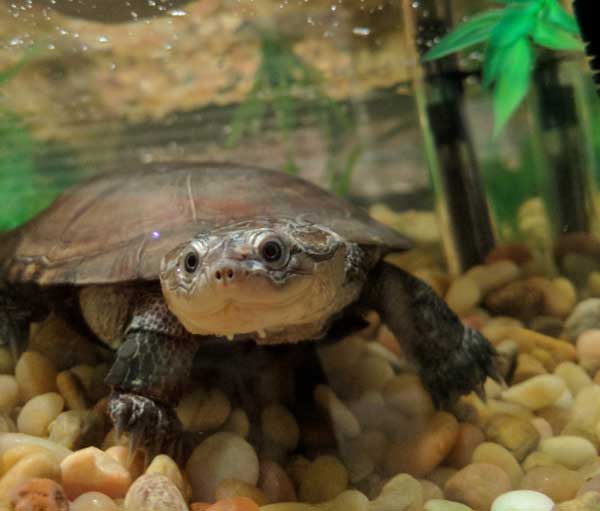
And the basking area should have a temperature of around 90 degrees F up to 100 degrees F. Get a heat bulb that can easily maintain this temperature range.
Follow the manufacturer’s instructions to install the heater lamp and make sure it sits at a good distance from the basking platform to avoid burning your pet.
Step 5. Place the UVB lighting in the basking area
You’ll also need to provide your African Sideneck turtle with a source of UV lighting.
This is crucial for the turtle’s health. It helps in vitamin D3 production and calcium metabolism, preventing metabolic bone disease and other shell diseases and infections.
Place the UV bulb at approx. 10 to 12 inches away from your turtle’s basking area and ensure you keep it on for around 12 hours, just like the natural sunlight in the wild.
Installing the bulb should be pretty easy as you’ll just need to follow the manufacturer’s instructions for the specific bulb you got.
And don’t forget to replace your bulb after every 6 to 9 months for continued effectiveness at emitting UV light.
Extras to consider for your turtle tank setup
The substrate can help give your tank a turtle’s natural look and feel. Though not essential for a turtle’s survival, you may still consider adding it to your turtle tank.
There are many substrate options available for your turtle tank, including sand, large gravel, etc. Just ensure you get something that’s not small enough to choke your turtle.
But keep in mind that substrate tends to collect turtle food and waste, thus requiring regular cleanup.
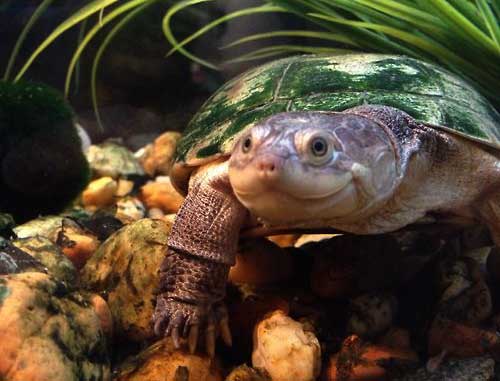
You should also provide your turtle with plenty of hiding spots in its enclosure. You may also consider adding aquatic plants (both fake and live) to act as additional hiding areas.
Adding other items such as rocks, driftwood, hollow logs, etc., will help create a more natural illusion in the enclosure and so on.
How big of a tank does an African Sideneck turtle need?
You should house your African Sideneck turtle in at least a 75-gallon turtle tank. As for the length, look for an enclosure that’s 1.5x longer than your actual turtle size.
These tank specifications will provide your pet with plenty of space for swimming and diving.
African Sideneck turtles are one of the turtle species that can grow into pretty big sizes—up to 12 inches.
If you own a female African Sideneck turtle, then you may want to get an even larger tank space as they grow much bigger than their male counterparts.
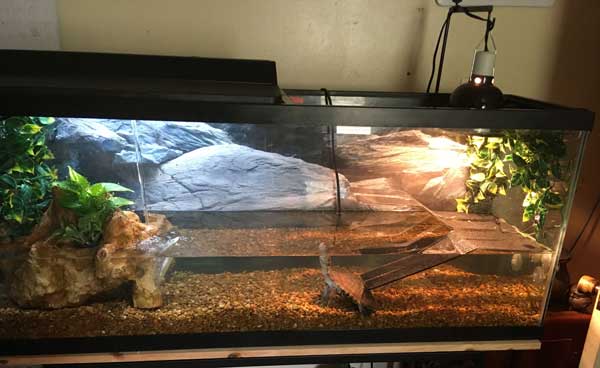
Bigger is always better when it comes to turtle tanks for these turtle species; the range should be anywhere from 75 to 100 gallons.
If you’re wondering “can an African Sideneck turtle live in a 20-gallon tank?”, the answer is No! This tank size will make your turtle feel cramped up and get easily stressed.
Are African Sideneck turtles fully aquatic?
African Sideneck turtles are semi-aquatic, and will only completely submerge in the waters when they’re eating or sleeping.
For this reason, you should provide your African Sideneck neck turtle with a habitat that provides a swimming area as well as a dry land area for basking.
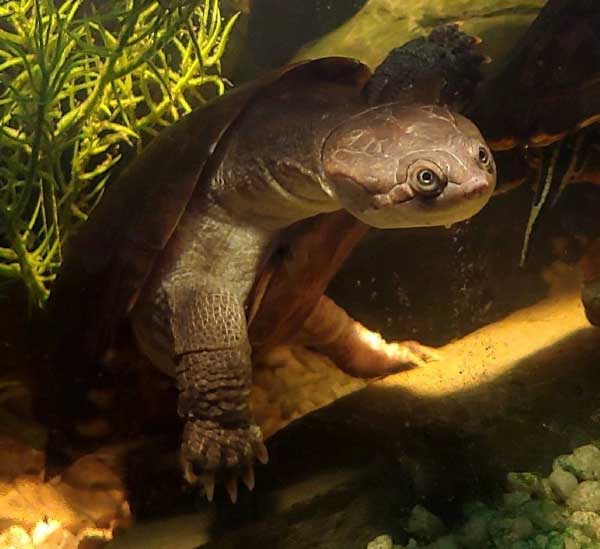
What’s the ideal African Sideneck turtle water depth?
We recommend filling your Sideneck turtle water with water up to ¾ or half full of its height.
According to PetMD, the water level should be ariound1.5x the length of your turtle. They recommend a water depth of around 6 to 8 inches.
However, note that the exact water level will depend on the size of your turtle.
The idea is to provide your pet turtle with a water depth where it can completely submerge itself and swim comfortably.
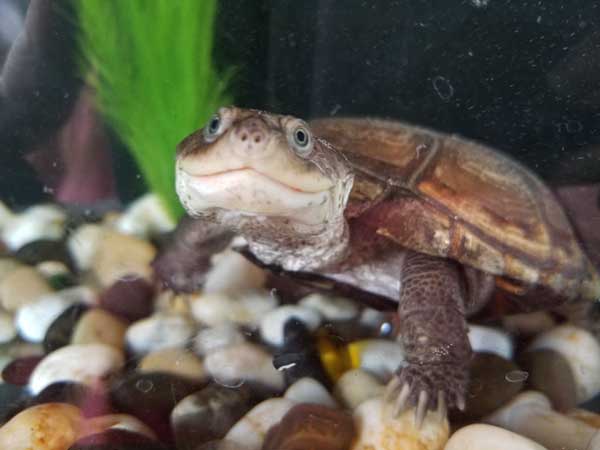
FAQs:
African Sideneck turtles like a tank with a swimming area and dry land/basking area given their semiaquatic nature. They also like the correct temperature for the swimming and basking areas to enable them to regulate their body temperatures. Above all, they require exposure to UV light for healthy shell development.
Yes, African Sideneck turtles can live with fish in their enclosure. However, you should ensure the type of fish you put in their tank aren’t aggressive or compete for food with your pet. Also, small fish are highly likely to be eaten by turtles, so make sure you get larger fish such as goldfish, koi, etc.
The African Sideneck turtle lives digging and burying itself in sand, so it can make a good addition to its tank substrate. Sand also helps bring out the natural turtle environment looks and is safe since your turtle can’t get stuck in it or choke on it.
Final Verdict
Now you know how to come up with the perfect natural habitat for your African Sideneck turtle that mimics its natural environment. The kind of setup to make your turtle feel happy includes a swimming area and a basking area, maintained at the recommended temperature levels. The turtle should also get exposure to UV light on its basking platform.
The key essentials you’ll need for your African Sideneck turtle habitat include an appropriate size tank, basking area, water heater, water filtration system, a heat lamp, and UV light. You may also consider adding substrate and other decorations that are safe for your pet to help create an illusion of its natural habitat.
